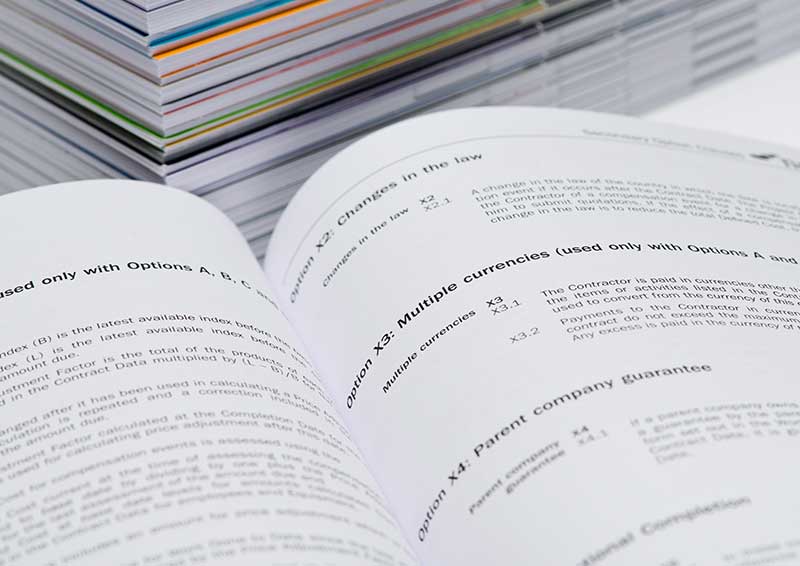Main contract
In a contract there is reciprocity of undertaking passing between the promisor and the promisee. The rights and obligations of the parties to the contract are created by the acts of agreement between them.
In the procurement of construction, contracts can be:
- Standard forms.
- Modified standard forms.
- Bespoke.
The ‘main contract’ is generally that which is awarded by the client (sometimes referred to as the employer) to the general contractor, or main contractor, whose tender has been accepted. The works required from the main contractor are set out in detail in tender documents, for which they have offered a price that has been accepted by the client.
Main contractors are often appointed under a traditional contract to construct a development for which the design has already been completed by consultants appointed by the client. However, under other forms of main contract, they might also provide part or all of the design, facilities management services, and even financing.
The organisations that the main contractor may appoint to carry out specific aspects of the works for them may be described as ‘subcontractors’, 'subbies', or simply as 'suppliers'. They will be appointed by the main contractor under subcontracts, and subcontractors may themselves appoint subcontractors under sub-subcontracts, and so on. See suppy chain for more information.
[edit] Related articles on Designing Buildings Wiki
Featured articles and news
RTPI leader to become new CIOB Chief Executive Officer
Dr Victoria Hills MRTPI, FICE to take over after Caroline Gumble’s departure.
Social and affordable housing, a long term plan for delivery
The “Delivering a Decade of Renewal for Social and Affordable Housing” strategy sets out future path.
A change to adoptive architecture
Effects of global weather warming on architectural detailing, material choice and human interaction.
The proposed publicly owned and backed subsidiary of Homes England, to facilitate new homes.
How big is the problem and what can we do to mitigate the effects?
Overheating guidance and tools for building designers
A number of cool guides to help with the heat.
The UK's Modern Industrial Strategy: A 10 year plan
Previous consultation criticism, current key elements and general support with some persisting reservations.
Building Safety Regulator reforms
New roles, new staff and a new fast track service pave the way for a single construction regulator.
Architectural Technologist CPDs and Communications
CIAT CPD… and how you can do it!
Cooling centres and cool spaces
Managing extreme heat in cities by directing the public to places for heat stress relief and water sources.
Winter gardens: A brief history and warm variations
Extending the season with glass in different forms and terms.
Restoring Great Yarmouth's Winter Gardens
Transforming one of the least sustainable constructions imaginable.
Construction Skills Mission Board launch sector drive
Newly formed government and industry collaboration set strategy for recruiting an additional 100,000 construction workers a year.
New Architects Code comes into effect in September 2025
ARB Architects Code of Conduct and Practice available with ongoing consultation regarding guidance.
Welsh Skills Body (Medr) launches ambitious plan
The new skills body brings together funding and regulation of tertiary education and research for the devolved nation.
Paul Gandy FCIOB announced as next CIOB President
Former Tilbury Douglas CEO takes helm.
UK Infrastructure: A 10 Year Strategy. In brief with reactions
With the National Infrastructure and Service Transformation Authority (NISTA).























